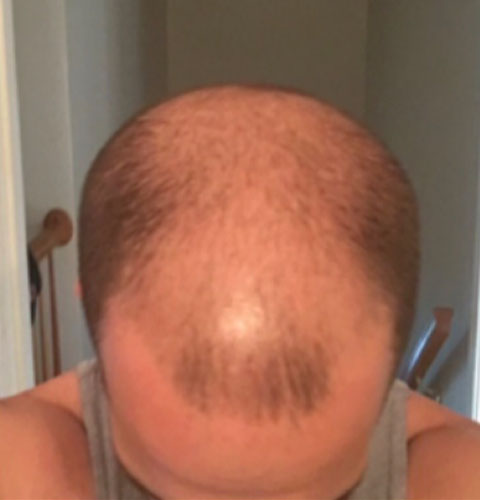When we initially start losing our hair, it doesn’t feel like a big deal. It’s normal, it happens. But when glaring bald spots and receding hairlines become apparent overnight, panic sets in.
What happened? How did I let it get so far? What can I do to fix it, fast! All of these may be questions you ask yourself,as you frantically search google for solutions, diagnosing yourself with several different illnesses at once.
Most men don’t fully realize they’re balding until it’s too late to do anything. Male Pattern Baldness (MPD) is an affliction millions of men face all around the world and is a leading cause of depression in men. The sooner you realize that it’s happening, the sooner you’ll be able to fix it.
Here are the 7 stages of hair loss on the Hamilton-Norwood scale to help you classify where you stand, and what you can do to combat it.
Stage 1
The first stage is a control stage, where there is an unnoticeable thinning of hair around the temples and hairline. It’s difficult to identify, but you should be cognizant of it if baldness runs in your family. Chances are, your hair will be thinning at an earlier age than normal. You can use solutions like oiling your hair or massaging your scalp to strengthen your hair follicles and stop them from breaking.
Stage 2
The hair thinning or loss that started in stage 1 now becomes more and more noticeable. Your hairline will begin to recede from your temples and the middle of your forehead. An M-shaped hairline can be seen and is also known as a mature or adult hairline. Overall hair loss is minimum. Environmental factors such as being around polluted air or cigarette smoke may exacerbate your hair loss.
Stage 3
Hair loss and bald spots become more evident in this stage of MPD. Your hairline may form a U or a V shape now. At this stage, you can categorize your hair loss as “baldness” on the Norwood stage as there is little hair left around your temples.
Stage 3 also has a substage known as the vertex, where the hairline may stay the same as in Stage 2, but hair starts thinning around the top of your scalp. You may be able to control this through changes in your diet such as including zinc and iron and eating nutrient-rich foods such as red meat, spinach, avocados, eggs, and fatty fish.
Stage 4
By this stage, you’ve probably lost a lot of hair. Large bald patches are visible at the back of your head, and the hairline recession is severe. Your temples may be connected by sparse strands of hair at the back.
Image Filename: man-hair-loss-crown-hair-thinning-bald-spots
Image Alt-text: man experiencing hair loss and thinning of hair on the crown
Stage 5
In this stage, there is probably a classic U-shaped hairline visible. By this stage, balding becomes difficult to treat. Your options may be a hair transplant, which is costly, or SMP treatment. Scalp Micropigmentation is a non-invasive treatment that involves pigmenting the follicles on your scalp to create the illusion of thicker, denser hair and covers up your bald spots.
Stage 6
By this stage, the hair on your hair is thin and bald patches are wider. Baldness is located at the top and front of your head, with no strip of sparse hairs between them. Hair around the temples may also be thinning, but the crown and front are mostly bald. Again, SMP treatment may be your best option as it reduces visible baldness and makes your scalp look fuller.
Stage 7
This is the last stage on the Norwood scale in which baldness is considered complete. You’ll probably have a few fine hairs left around your temples while the top of your head is completely bald. At this stage, treatment for recovering your hair is almost non-existent, and you have to accept defeat.
If you’re in any one of the stages of MPD and are looking into treatments for hair loss around Delaware, we recommend SMP treatment. It’s a non-invasive treatment that involves pigmenting the follicles on your scalp to create the illusion of thicker, denser hair and covers up your bald spots. SMP treatment for men is very popular as it is cost-effective and an easy fix to restore your happiness.
So what are you waiting for? Contact our team of professionals before it’s too late for you! Call us at302-292-0380 for appointments!

